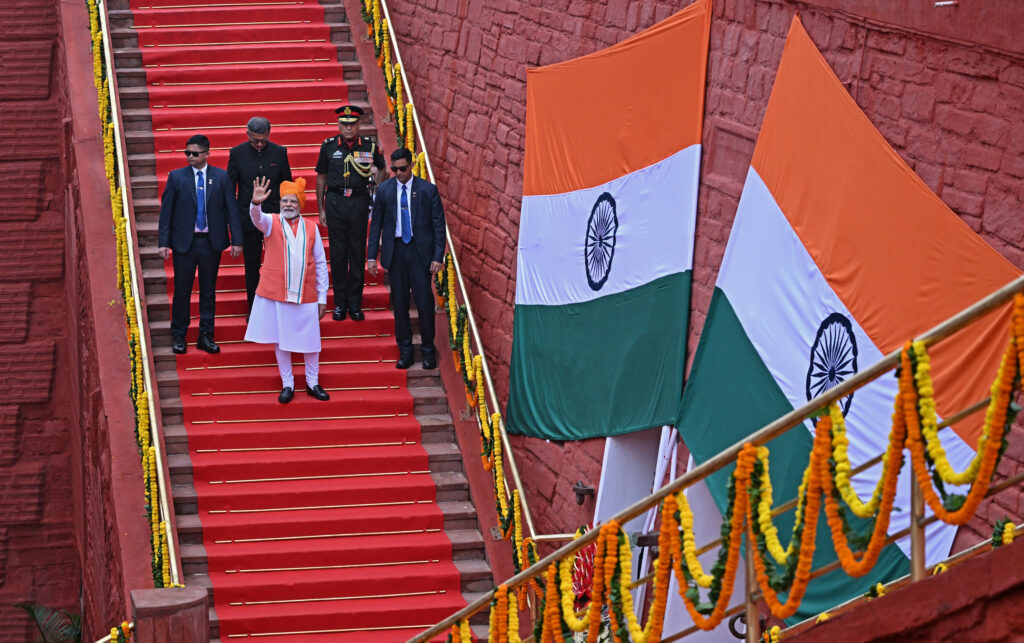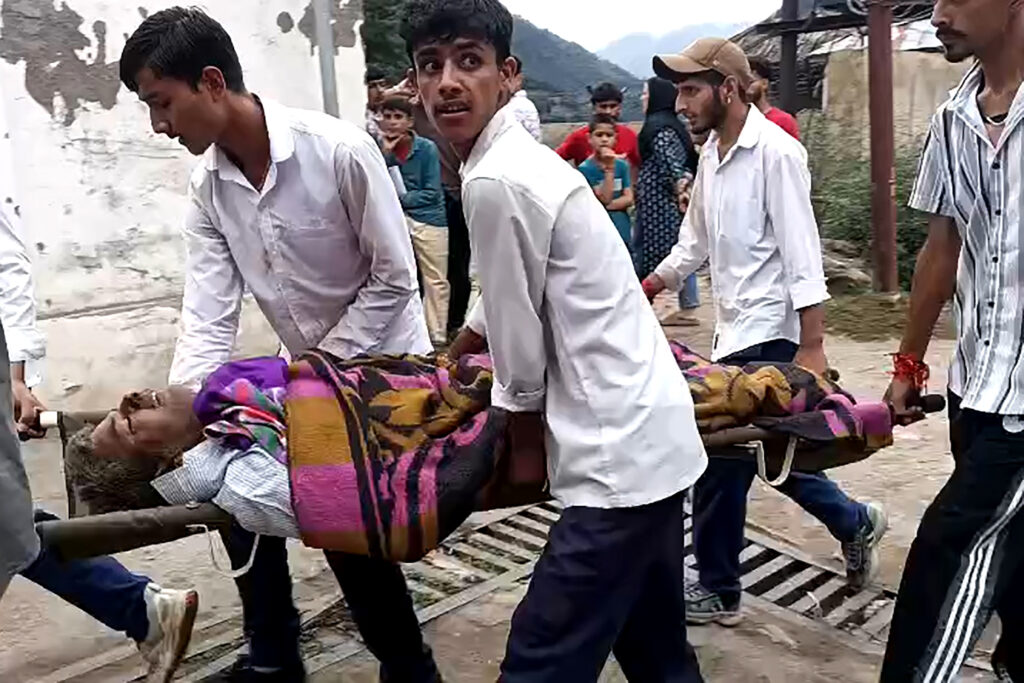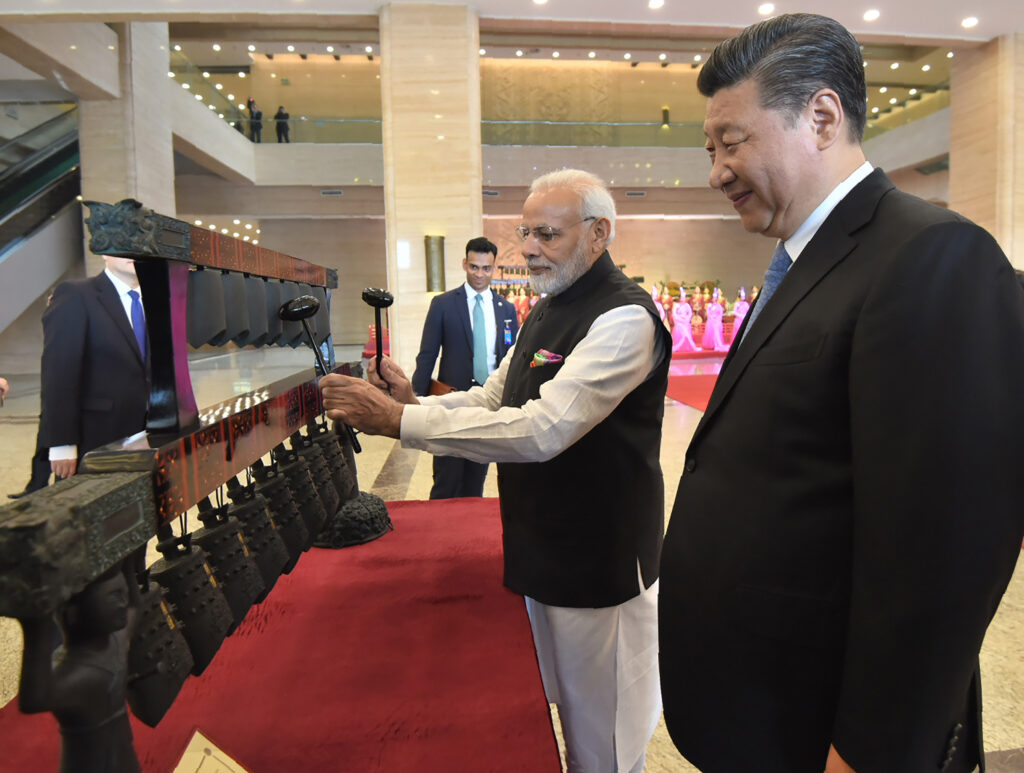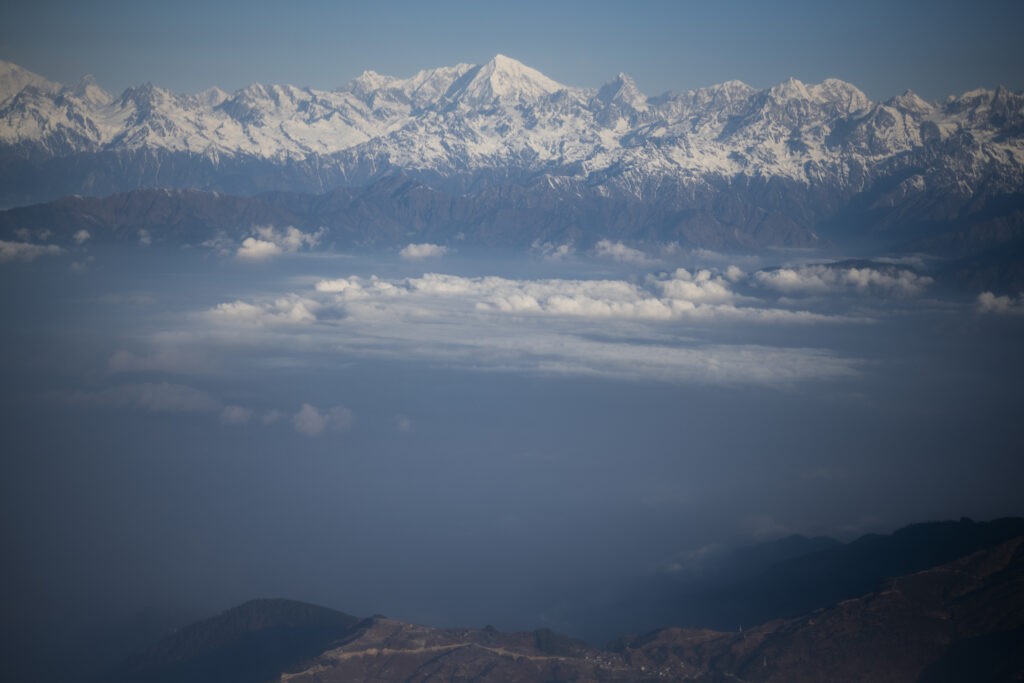Facing US tariffs, India’s Modi vows self-reliance
Prime Minister Narendra Modi said Friday that India is seeking self-reliance in energy independence and the development of its own powerful defence systems, vowing to defend his country’s interests “like a wall”.Modi delivered his annual Independence Day address from the imposing ramparts of New Delhi’s Red Fort at a time when India faces intense pressure and threats of additional tariffs from the United States.”Self-reliance is the foundation of developed India,” Modi said after a flypast of military helicopters scattered flower petals above an invited crowd of thousands.”Freedom becomes meaningless if someone becomes too dependent on others”.Ties between New Delhi and Washington have been strained by Trump’s ultimatum that India end its purchases of Russian oil, a key source of revenue for Moscow as it wages its military offensive in Ukraine.India has said it “stands ready” to support efforts to end the Ukraine war and endorses a summit to be held between Trump and Russian President Vladimir Putin in Alaska on Friday.But the United States says it will double new import tariffs on India from 25 percent to 50 percent by August 27 if New Delhi does not switch crude suppliers.”We know that we remain dependent on many countries to meet our energy needs”, said Modi, leader of the world’s most populous nation and fifth-biggest economy.”But to build a truly self-reliant India, we must achieve energy independence.”US Secretary of State Marco Rubio, in a statement congratulating India’s Independence Day, said the relations between the two nations were “consequential and far-reaching”, and wanted to “ensure a brighter future for both”.- ‘Blood and water’ -Modi urged scientists and engineers to focus on building key sectors and technologies including fighter jet engines, semiconductor chips and military hardware systems.”We will have India-made semiconductor chips in the market by the year’s end,” Modi said.He added that the country was also working towards building a space station and would have a “defence shield” in the next decade, without giving further details.Modi also honoured the Indian armed forces, which took part in a four-day conflict with arch-rival Pakistan that ended in a ceasefire on May 10. “India will give a befitting reply to any other misadventure by the enemy,” he added, and referred to New Delhi’s suspension of its cross-border water sharing treaty with Pakistan.”India has decided that blood and water will not flow together”, he added.Modi did not speak directly about Trump, but said he would “stand like a wall” against any policy that hurts the interests of farmers.Agriculture employs vast numbers of people in India and has been a key sticking point in trade negotiations.”When economic selfishness is rising day by day… we must not just sit and worry about the crisis but instead focus on our strengths,” Modi said.







